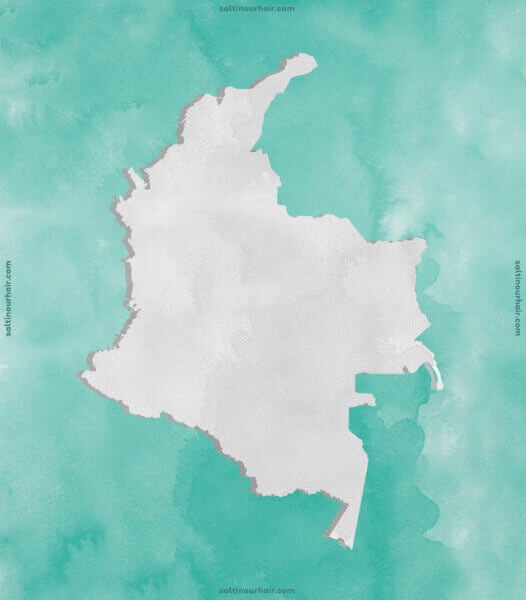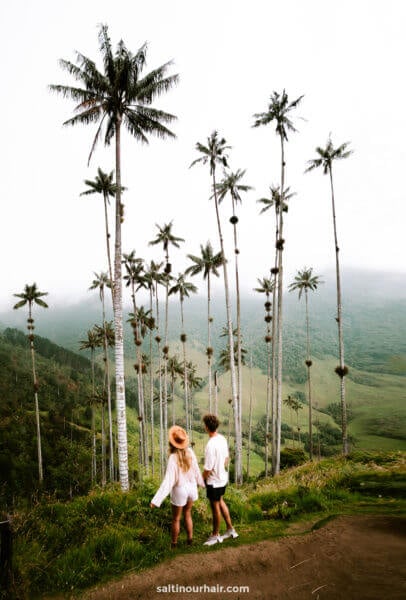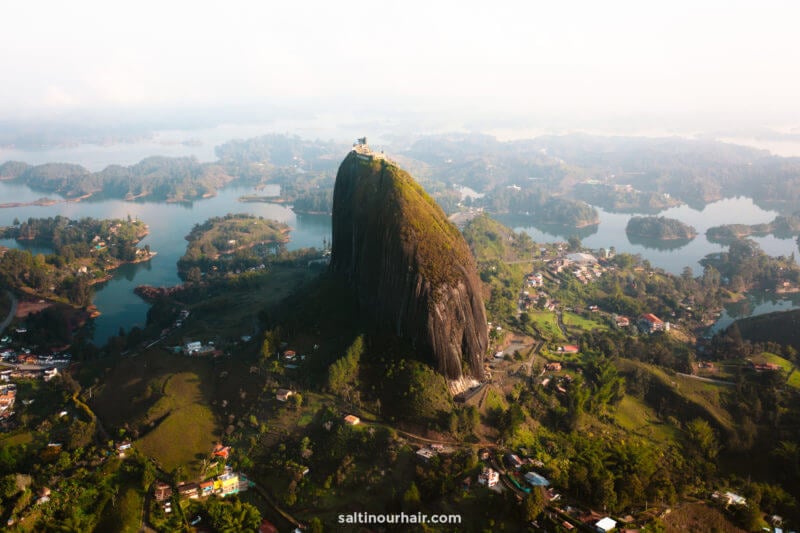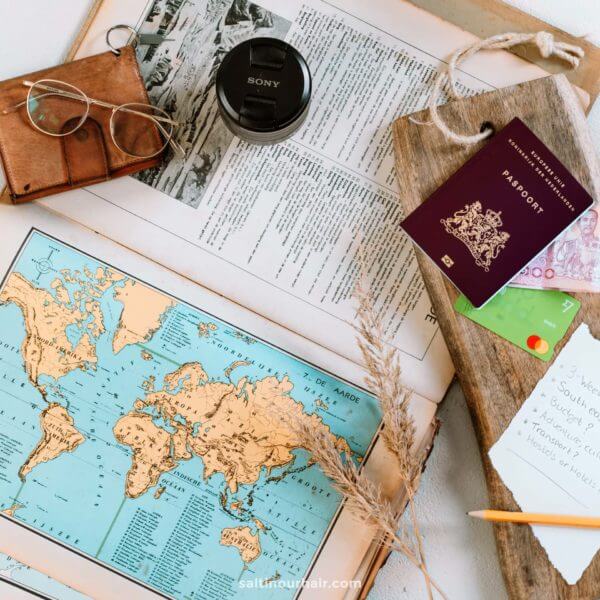Best time to visit Colombia
Best Things to doin Colombia

Map of Colombia
Weather in Colombia
Colombia's location on the Equator guarantees year-round warmth. The best and driest months run from December to March — perfect for sunny adventures. April to November brings more storms but lower prices and a great time to visit for crowd-averse travelers!
- Find Hotels via Booking.com
- Find Hostels via Hostelworld
- Find a Rental Car via Sunny Cars
- Find Flights to Colombia via Skyscanner
- Get a Travel Insurance via Heymondo
- Book Tours & Attractions via GetYourGuide
- Book a Bus/Train/Transfer via 12Go
- Get a Visa via iVisa
- How to pack light for your trip
- How to plan your trip our tips
Colombia is a captivating destination that seamlessly blends its diverse landscapes, vibrant culture, and warm hospitality. From pristine Caribbean beaches to lush rainforests, rich history, thrilling adventures, and incredible coffee culture, Colombia offers a unique blend of landscapes and experiences perfect for exploring.
Colombia is one of the cheapest destinations to travel in South America. Hotels start from around $15 per night, while delicious meals at local eateries cost as little as $3, perfect for those seeking incredible travel experiences without breaking the bank.
It’s a common misconception that tap water is unsafe to drink throughout Colombia, but in most major cities like Cartagena and Medellín, the water is suitable for drinking. However, tap water in rural areas, such as Minca and Tayrona National Park, should be avoided.
Visiting Colombia for less than 90 days? Most passport holders don’t need a visa; you can even fast-track immigration by preloading information about your stay online in advance. Just make sure to have a valid passport and proof of a return/onward ticket, and get ready for your adventure!
Tip: Some countries have stricter visa regulations, so check your entry requirements well ahead of time.
Spanish is the primary language spoken in Colombia. While English is widely spoken in the tourist areas, it’s worth knowing some basic Spanish words to enhance your connections with Colombian locals.
Travel insurance is essential when visiting Colombia! It provides crucial protection against unforeseen circumstances, such as medical emergencies, flight disruption, and lost luggage, so that you can discover this incredible country with peace of mind.
Despite its turbulent history, Colombia is one of the most popular tourist destinations in South America; therefore, an emphasis has been put on traveler safety. Exercise caution by keeping your valuables out of sight and staying in well-traveled areas.
Colombia primarily uses Type A and Type B plugs. You can use Type A plugs in Type B sockets, but not the other way around. An international plug adapter is a great option, ensuring you always have the correct plug type and keeping you charged during your trip.
People love Colombia for its unique blend of diverse landscapes, experiences, and vibrant culture. Whether you’re going to be hiking through the palm-filled landscapes of the Cocora Valley, exploring the colorful streets of Medellín, or relaxing on the beaches of Palomino, there is something for everyone.
Travel to Colombia
Colombia is a country of two sides. Where pristine beaches meet rugged snow-capped mountains, and modern skyscrapers coexist harmoniously next to charming pueblos; a place of unexpected beauty. With a turbulent history of gang rivalry and drug cartels, you’ll now find united communities and smiling locals. This history, combined with its vibrant culture and stunning landscapes, makes traveling Colombia so special.
How to Plan Your Trip to Colombia
Explore our Colombia travel guides to plan your perfect trip! Whether you’re backpacking or looking for the best-kept secrets, we’re here to help. Dive into the best things to do in Colombia, or check our complete 3-week Colombia travel guide and discover this extraordinary country!
Short on time? 2 Weeks in Colombia is the perfect amount of time to tick off the country’s highlights and explore some of the most breathtaking landscapes in the world.
Best Time to Visit Colombia
Planning your backpacking adventure or dream vacation in Colombia? Find out about the weather in Colombia to choose the best month to visit.
Dry Season (December – March): Consider visiting between December and March, the driest months. With minimal rainfall, clear skies, and sunny days, it’s the ideal time to explore Colombia’s stunning landscapes and beaches. However, good weather typically brings larger crowds and higher prices. If you’re planning to visit Tayrona National Park, we’d recommend avoiding December, as locals travel here for the holidays, which can get extremely busy.
Wet Season (April – November): Expect occasional downpours outside these months (April-November), but don’t let that stop you. The off-season is a fantastic time to travel; the temperature is still pleasant, yet prices are typically lower, and there are fewer crowds, so it can be a great time to go on your Colombia holiday!
It’s also worth noting the climate in Colombia varies depending on where you are in the country. Central Colombia is always a little colder than North Colombia, so make sure to pack layers for the cooler temperatures.
Best time to visit Colombia for festivals: If you’re keen to experience the incredible culture, the best time to visit Colombia is during local festivals, such as Carnaval de Barranquilla in February and Medellín’s Feria de las Flores (the Festival of Flowers) in August, offering a unique insight into the traditions of the country.
Whatever time you choose, Colombia promises a rich and diverse experience for every traveler.
Coastlines and Beaches in Colombia
Some of Colombia’s best places to visit are along the Caribbean coast, where you’ll find pristine white sandy beaches and turquoise waters.
One of the best things to do in Colombia is spend the night in Tayrona National Park, home to beautiful beaches, an abundance of wildlife, and dense jungle. Spend your day sipping on freshly picked coconuts, hiking through lush forests, over wooden walkways and boulders, and enjoying the crystal clear waters and incredible marine life. Best of all, end the night sleeping in a hammock under the clear night sky – a true bucket-list experience!
If you’re looking to relax for a few days, Palomino is the perfect spot; a quaint beach town that welcomes the slower pace of life. For a bit more of a buzz, the Baru Islands off the coast of Cartagena is a local favorite, with a lively atmosphere that’s hard to beat.
For off-the-beaten-path adventures, the Pacific coast of Colombia is the ideal place. Home to dense rainforests, rugged beaches, and whale-watching opportunities, this area is a true hidden gem waiting to be explored.
Whether you’re looking for a relaxing vacation in Colombia or a backpacking adventure, the coastlines and beaches cater to all.
Food, Culture, and Religion in Colombia
Colombia is a country where food, art, and festivities hold a special place in the heart of its population, finding any excuse to gather and enjoy home-cooked arepas or take to the streets and salsa dance. But Colombia’s creative expression doesn’t stop there; art is everything, bringing people together and changing the lives of many. Suburbs like Communa 13 in Medellín, once rife with violence, have evolved thanks to the arrival of street art conveying powerful political messages. After seeing these murals, the colors will leave a lasting impression in your memory forever.
In addition to its cultural roots, religion plays a prominent role, with most of the population following the Catholic faith. This influence is evident in the breathtaking churches and cathedrals scattered across the country, like Las Lajas in Pasto, voted one of the world’s most beautiful churches. Additionally, religious events, like Semana Santa (Holy Week), span the country and create a deep connection among its people.
Colombia’s food and coffee scene reflects its vibrant culture, full of diverse flavors, aromas, and colors. From iconic dishes like arepas, bandeja paisa, and buñuelos to regional specialties such as hearty stews in the Andean region and ceviche on the Caribbean coast, Colombian cuisine is a sensory journey. Given its world-renowned coffee culture, it should also be no surprise that Colombia is one of the world’s largest coffee producers, recognized for its rich, full-bodied flavor, a must-try for all coffee lovers while in the country!
Why You Should Travel to Colombia
Some of the planet’s most extraordinary natural experiences can be found on vacation in Colombia. Whether you’re riding through the world’s tallest palm trees, hiking in the Andes, or snorkeling in the crystal clear waters of the Caribbean coast, this country offers endless opportunities for exploration and adventure.
Among these landscapes, discover lost cities, underground salt mines, and puzzling natural phenomena – each with an ancient story that forms the backbone of Colombia’s heritage.
What sets Colombia apart is the availability of travel for all types of budgets. Whether you’re looking to explore diverse landscapes, dive into the rich culture and history, drink endless amounts of coffee, or relax on one of the many tranquil beaches, Colombia is one of the most affordable destinations to experience in South America.
Safety and Travel Advice in Colombia
Colombia is a vibrant and unexpectedly stunning destination in South America with a history of conflict, violence, and political instability. While much of this is in the past, travelers planning a holiday in Colombia should follow precautions to get the most out of this beautiful country.
Natural Disasters: Colombia is susceptible to natural phenomena like earthquakes, hurricanes, and volcanoes. It’s advised to stay informed about local conditions, follow local authorities’ guidance, and consider travel insurance that covers unexpected events.
Crime and safety in Colombia: While violent crime is on the decline, and the country has made significant progress, it’s advised to stick to well-known tourist destinations and exercise caution. Petty theft is still a problem, so always keep valuables out of sight, particularly in busy areas and on public transport. We’d also recommend going out with other travelers at night and not on your own, sticking to well-lit streets.
Learn more about travel safety
Protests in Colombia: Sometimes protests can happen unexpectedly, causing disruption to the area. It’s advisable to steer clear of any of these demonstrations in case they escalate.
Cultural Sensitivity: While Colombians are very warm and welcoming, the country boasts a rich cultural heritage, so respecting local customs is important. Learning a few basic Spanish phrases is always really appreciated. Before taking photographs of local people or their property, always ask permission. And it’s suggested to avoid sensitive topics of conversation such as politics.
Travel Insurance: Before heading on your Colombia holiday, purchasing travel insurance is essential. Petty theft and unexpected accidents, such as lost baggage and injuries, can occur, so it’s always best to protect yourself. Check out these best travel insurances.



















